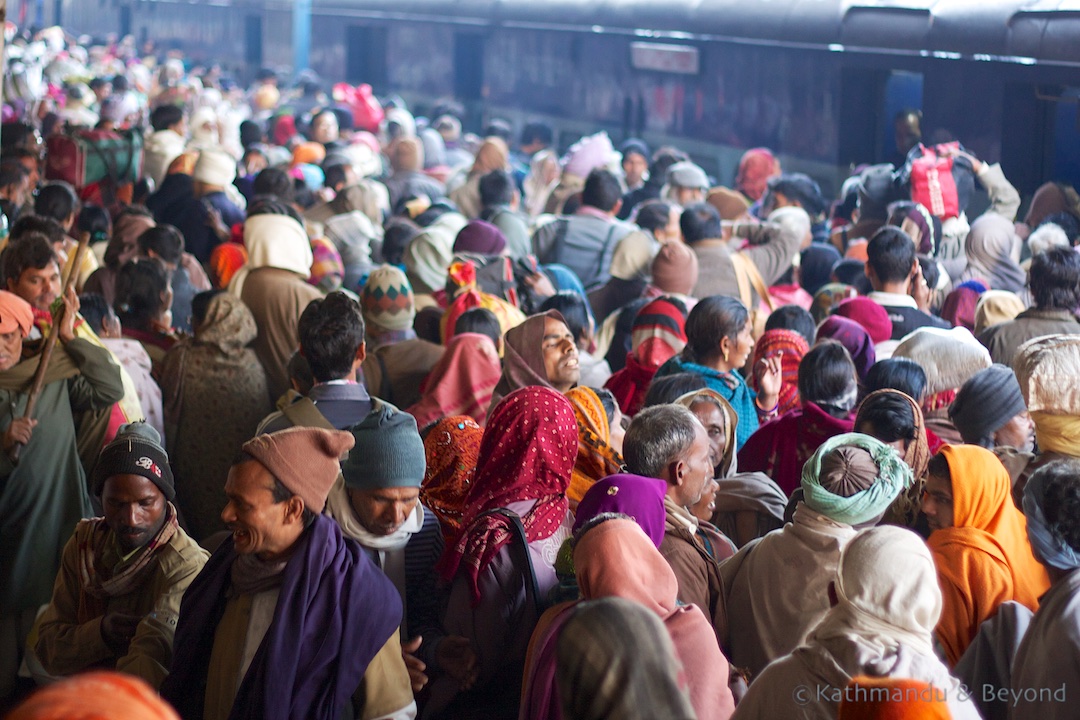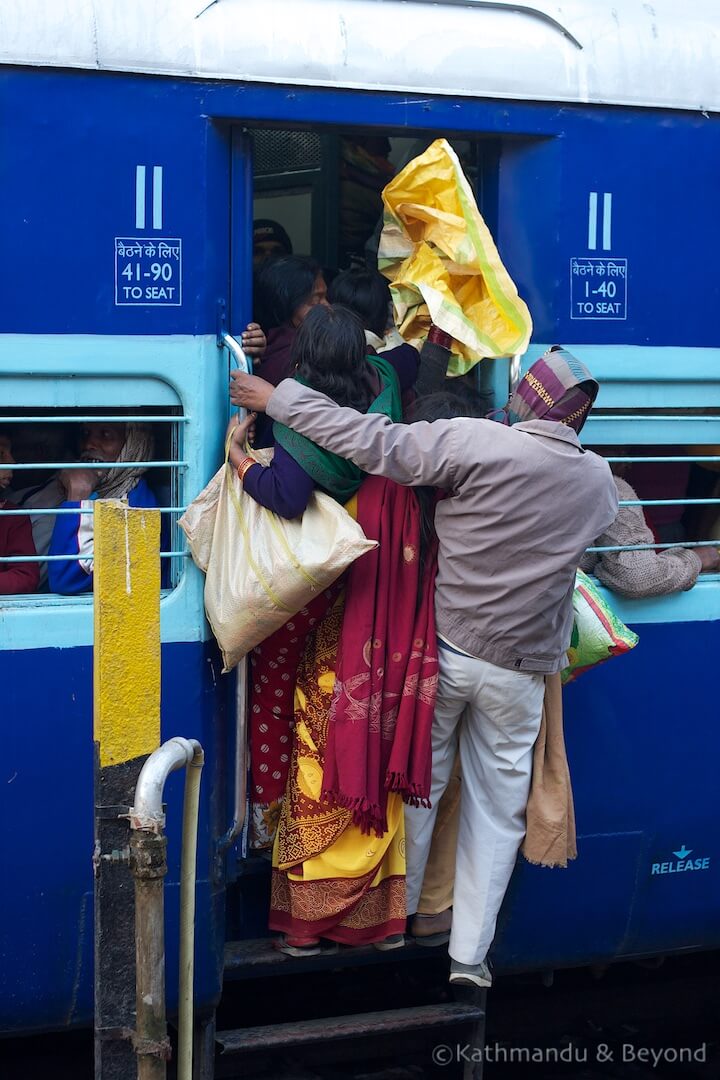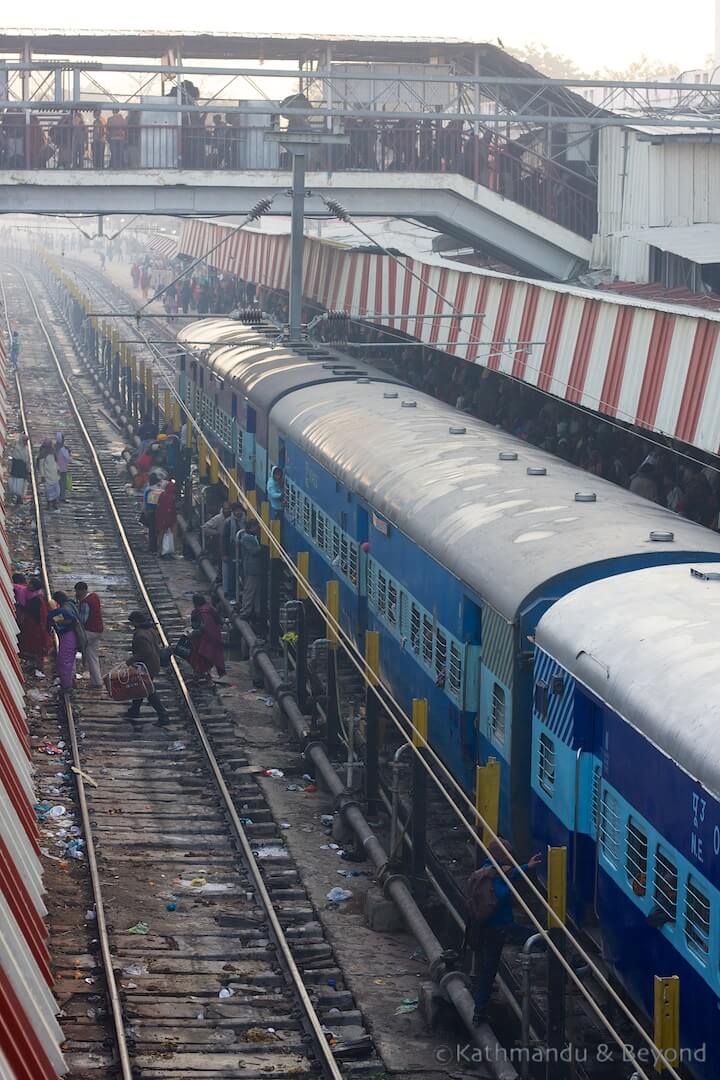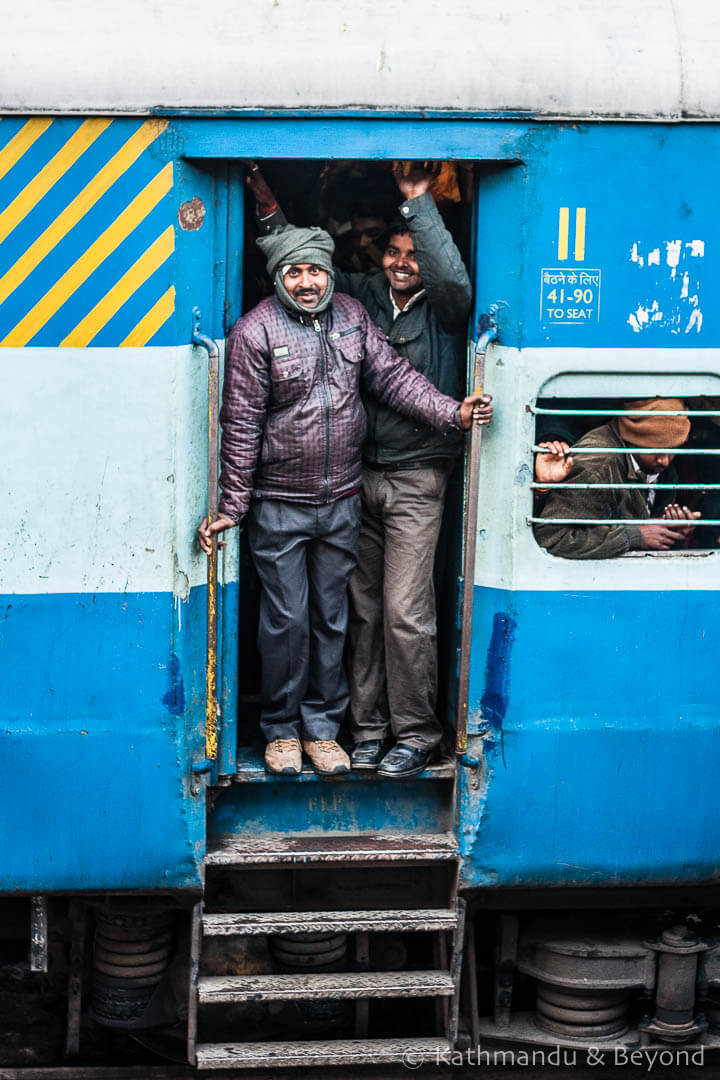Major Indian railway stations are often pretty busy and over the years we had become used to navigating them in order to find our platform and carriage number (*). But when we arrived at about seven-thirty in the morning at Varanasi’s main railway station to the scene in this photograph, even we were dumbstruck and didn’t know where to start.
(*) In India, all 1st and 2nd class railway carriages have a manifest published on the side of them, listing your name and seat/berth number. This is fine and helps you identify where you are located on the train but for some strange reason, the manifest also publishes your age. I have asked several Indian friends why this is so but nobody seems to know.

We had about 45 minutes before our train to Bodhgaya in the state of Bihar, so we knew that in theory we should be fine but it took a moment for both of us to regroup and work out the best way of getting to our platform. Sod’s law, the entrance to Platform One was almost equidistance from the two bridges (one at each end) that linked that platform with all of the others. I’m left-handed and will always pick left over right in such a situation so I made the call and we started to push, shove, heave and squirm our way to the bridge. After about 10 minutes or so we had made reasonable progress and in fact, the entire journey only took about 20 minutes to include finding our carriage number. It’s a long time since either of us has travelled 3rd class on the Indian Railways, preferring 2nd class these days and there was never a time in all my visits to India that I had been happier about this than this occasion.
The busyness of the railway station was compounded by the fact that the Kumbh Mela, the largest holy fair in the world, was taking place in nearby Allahabad and many pilgrims were taking the opportunity to visit Varanasi as a side trip from the fair. We took this photo on 2nd March 2013, having left Allahabad seven days earlier. On the 10th February 2013, a stampede broke out at Allahabad railway station in which 36 people were killed and just shy of 40 people were injured. It makes you think, there for the grace of Buddha and all that …




Sod’s Law? I’ll have to look that up in Blackstone’s Commentaries.
The crowd looks like it is dressed for cold weather, though it is early March.
I wonder if including your age (and I think they also include your sex) is just to give the conductor a quick way to determine if the person he sees in your seat might really be the person listed on the manifest. But that is just a wild guess. Probably best not to probe this issue too deeply.
While Murphy’s law says that anything that can go wrong, will go wrong (eventually), Sod’s law requires that it always go wrong with the worst possible outcome.
Who knows the vagaries of the Indian Railway system and who might have given them such complicated administration processes … 😉 As you say, like much in the Subcontinent, it’s best not to analysis things too deeply!
WOW, that looks crazy! I was thinking the same thing about the age, maybe it’s so that the conductor can easily figure out if the person in the seat is the one allocated to it or not 🙂
Could be but I reckon it is more down to Indian bureaucracy which we, the Brits, gave them along with the railway of course!
A bit late to the party lol, but I guess they publish the age, so that if there are two “John Doe” in the same compartment, you can tell which one is yours? Again, its just a wild guess as I never wondered about this until I read your blog 🙂
I never thought about that but it’s plausible. I’ve been thinking about it from a foreigner-point-of-view but many Indians have similar names so I reckon you could be right. Well deduced!